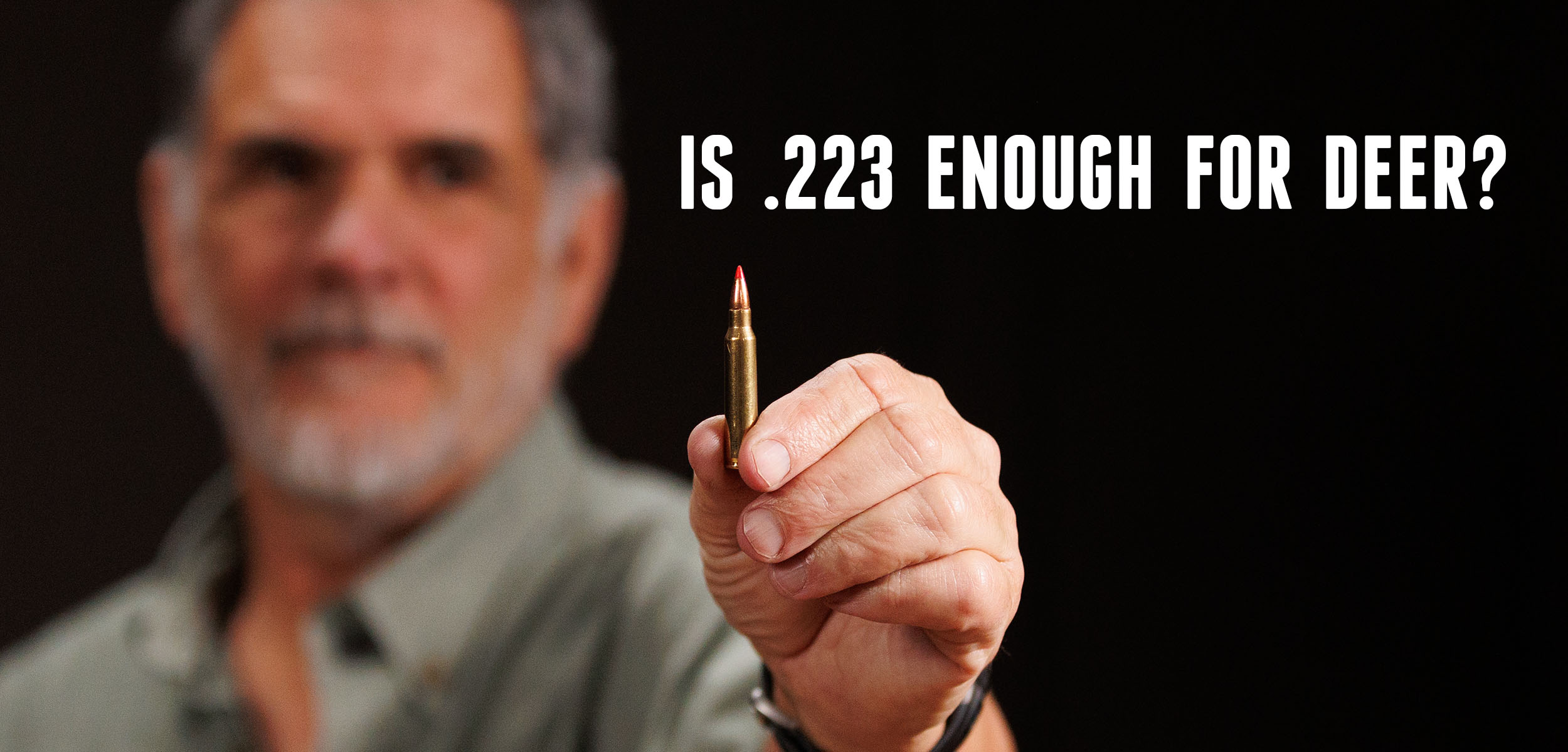While the .30-06 has long been my go-to hunting rifle, did you know I’ve dispatched over a dozen deer with a .223? (Note: .223 is illegal for deer in Washington state but legal in many others.)
Disclaimer
Ultimate Reloader LLC / Making with Metal Disclaimer: (by reading this article and/or watching video content you accept these terms). The content on this website (including videos, articles, ammunition reloading data, technical articles, gunsmithing and other information) is for demonstration purposes only. Do not attempt any of the processes or procedures shown or described on this website. All gunsmithing procedures should be carried out by a qualified and licensed gunsmith at their own risk. Do not attempt to repair or modify any firearms based on information on this website. Ultimate Reloader, LLC and Making With Metal can not be held liable for property or personal damage due to viewers/readers of this website performing activities, procedures, techniques, or practices described in whole or part on this website. By accepting these terms, you agree that you alone are solely responsible for your own safety and property as it pertains to activities, procedures, techniques, or practices described in whole or part on this website.
Origins of the .223/5.56
The 5.56/.223 Remington cartridge — both lighter and smaller than the 7.62×51/.308 Winchester — was developed in the 1950s for the military. Vietnam soldiers had mixed experiences with it in the M16— reliability suffered due to incorrect powder in the ammunition and lack of chrome plating in the chamber and bore. For all of the initial faults, the 5.56/.223 endured and has been successfully used by the military, law enforcement, hunters, competitors, and plinkers alike. Hunters knew it first as a varmint cartridge, then as a predator cartridge, and later as a deer and wild hog cartridge.
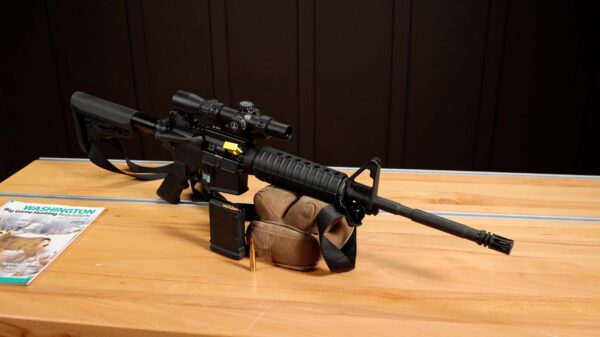
The 5.56 military version was improved with heavier bullets which were made possible by a faster barrel twist rate. The .223 civilian version also benefited from better bullets and faster twist rates. Over time, manufacturers developed bullets and .223 ammunition well-suited for deer hunting.
My Personal Experience
Like many others, my first experience with the 5.56 was in the military. I knew about the .223 and the 5.56, but had only fired and hunted with larger, more powerful centerfire cartridges such as the .30-06, .257 Weatherby, and the 6mm Remington. I looked at that little 5.56 cartridge, shrugged my shoulders, and qualified expert with it 11 times consecutively in the Marine Corps. Shooting good scores out at 500 yards with the iron-sight AR-15 led me to respect the little cartridge more.
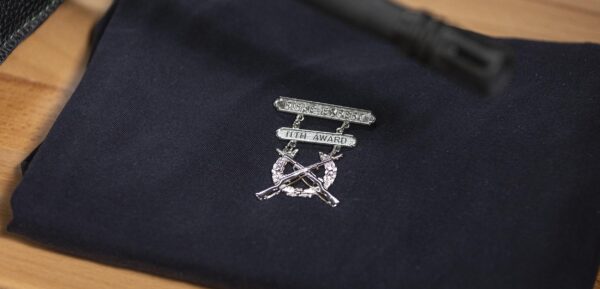
Following my career in the Marines, I started another in law enforcement and helped usher in the use of the AR-15 at my department and for SWAT. As a “patrol rifle instructor,” I gained some fresh knowledge using the AR-15.
Every winter my hometown sees a number of mule deer descend into town from the snowy mountains. This isn’t unexpected, as our town was built on their traditional wintering grounds. Most winters deer get injured and have to be dispatched. Dogs attack them. They get hit by vehicles including the train where it enters town, and the deer sometimes cluster on the tracks to avoid the deeper snow. Some of the deer are badly injured; others are still mobile but need to be finished humanely. Part of my job was to put these animals out of their misery with my patrol rifle. In Washington, a 6mm or larger bore is required for hunting deer, elk, and bear, so it’s unusual here to use a .223 on deer. (Other states allow .223 on deer, hogs, and other medium-sized game.)
I was impressed with how quickly the little 55 grain soft point Federal ammunition dispatched mule deer out to 50 yards or so. I never had to take a shot beyond that distance and only one required a second shot. Later we switched to 55 grain bonded soft point Federal ammunition which worked just as well. The meat was donated to the local men’s shelter.
I wanted to get some information on using the .223 for hunting deer-sized game, so I contacted a hunter I knew had done a lot of that. Tom Brownlee sent me some photos and also some enthusiastic words about hunting with the small, light-recoiling cartridge. Tom not only hunts deer with his .222 and .223 rifles, but also deer-sized “exotics” like fallow deer and black buck as well as wild hogs.
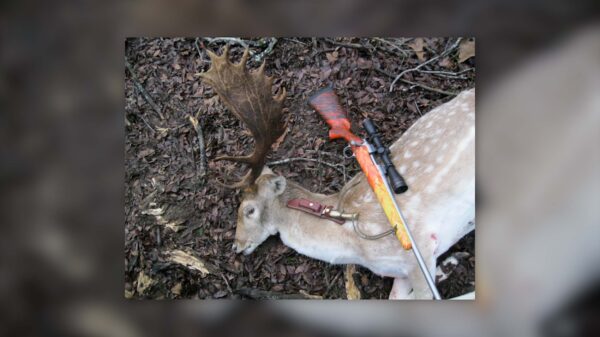
For the hogs, Tom relies on head shots and has found the 55 grain Hornady V-Max “just about perfect” from both the .222 and .223 cartridges. He prefers shoulder shots for deer and other game, relying on the 55 grain Speer Gold Dot or the 55 grain Barnes TTSX.
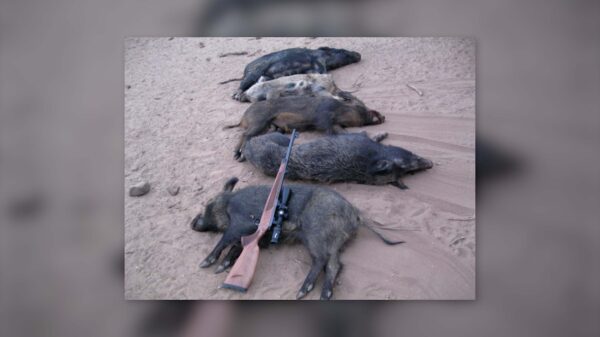
Tom’s reasoning for using the small bore cartridges parallels my reasons detailed in “It Doesn’t Take a Cannon.”
Deer are easily brought down with a well-placed hunting bullet. There’s no need to put up with the heavier recoil of larger cartridges.
Ammunition and Bullet Options
Ammunition makers have recognized the popularity of the .223 for hunting deer-sized game and have developed quite a few factory ammo options specifically for that purpose. Hornady, Remington, Federal, Barnes and Winchester all produce .223 ammunition for deer hunting.
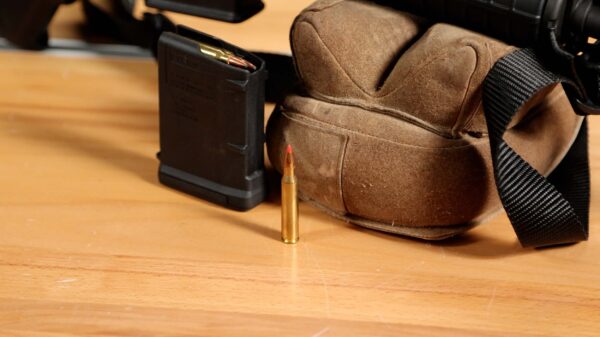
Bullet makers also offer a variety of .224” diameter bullets intended for deer hunting including the Hornady 50 grain CX, Barnes 55 grain TTSX, and Sierra 65 grain GameKing.
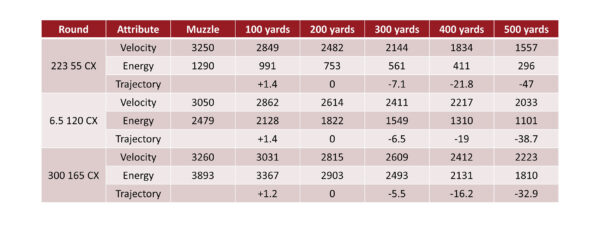
We decided to compare the little .223 with two well known deer hunting cartridges, the 6.5 Creedmoor and the mighty 300 Winchester Magnum. The 6.5 has become incredibly popular in recent years and is regarded as a mild-shooting, accurate, and effective choice. The 300 magnum is obviously far more powerful than necessary for deer, but it’s been a popular choice “out west” where a hunter may rely on one hunting rifle for deer, elk, bear, and more. To keep things similar, we chose Hornady’s Superformance line of ammunition and copper expanding CX bullets for all three cartridges. The chart above details velocity, energy and trajectory from the muzzle out to 500 yards for easy comparison.

All three cartridges start at 3050 – 3260 fps at the muzzle. The 6.5 and the 300 each retain 2000 fps or more out at 500 yards while the .223 slows to 1557 fps by then. Velocity is needed to ensure adequate penetration and expansion on game. I prefer an impact velocity of at least 2,000 fps for reliable bullet performance.
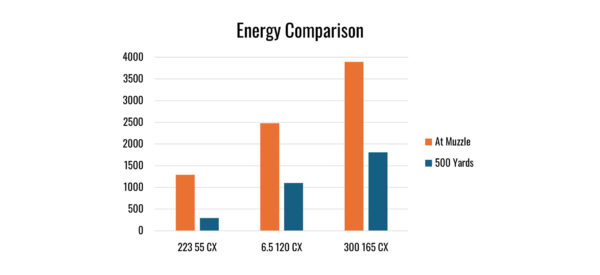
Energy is one way to compare the “power” of various cartridges. Here it’s obvious that the little .223 just doesn’t produce much energy, particularly downrange where the velocity has dropped off. At 500 yards the 300 Winchester magnum produces more energy than the .223 does at the muzzle!
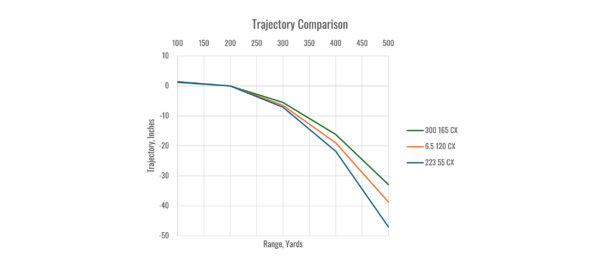
Out to 300 yards, all three cartridges produce similar trajectories. Beyond that, the longer, higher BC bullets of the 6.5 and the 300 retain velocity better and drop significantly less than the .223 does.
Conclusion
Given all of this information, is the .223 enough for deer? YES! The .223 can be, and is, an effective cartridge for hunting deer-sized game. Its big advantages are reduced recoil and smaller lighter cartridges. (Be sure to check your state’s game regulations!)
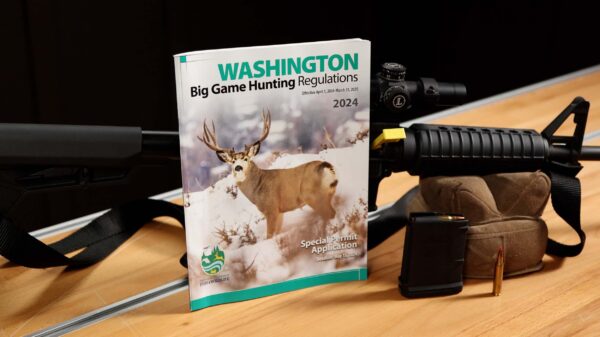
I’ve often heard people caution that shot placement is particularly critical when using a smaller, less-powerful cartridge. As a hunter I’d hope that we’re all doing our best to make good shots on game no matter what we are using!
Perhaps someday I’ll be able to hunt deer with a .223 rifle. A good .223 bolt action rifle seems like a very practical and useful choice.
Get the Gear
Hornady .223 Remington 50 Grain CX Superformance Ammunition at Midsouth Shooters Supply
Barnes .223 Remington 55 Grain TSX VOR-TX Ammunition at Midsouth Shooters Supply
Barnes .224 55 Grain TTSX Bullets at Midsouth Shooters Supply
Don’t miss out on Ultimate Reloader updates, make sure you’re subscribed!
Thanks,
Guy Miner
